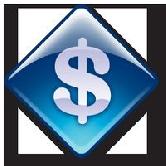
 |
|
| Financial Terms | |
| Working Capital Cash |
|
Information about financial, finance, business, accounting, payroll, inventory, investment, money, inventory control, stock trading, financial advisor, tax advisor, credit.
Main Page: inventory, financial, finance, inventory control, payroll, accounting, stock trading, money, |
Definition of Working Capital Cash
Working Capital CashThe cash component of working capital.
Related Terms:NPV (net present value of cash flows)Same as PV, but usually includes a subtraction for an initial cash outlay. PV (present value of cash flows)the value in today’s dollars of cash flows that occur in different time periods. Average cost of capitalA firm's required payout to the bondholders and to the stockholders expressed as a CapitalMoney invested in a firm. Capital accountNet result of public and private international investment and lending activities. Capital allocationdecision Allocation of invested funds between risk-free assets versus the risky portfolio. Capital asset pricing model (CAPM)An economic theory that describes the relationship between risk and  Capital budgetA firm's set of planned capital expenditures. Capital budgetingThe process of choosing the firm's long-term capital assets. Capital expendituresAmount used during a particular period to acquire or improve long-term assets such as Capital flightThe transfer of capital abroad in response to fears of political risk. Capital gainWhen a stock is sold for a profit, it's the difference between the net sales price of securities and Capital gains yieldThe price change portion of a stock's return. Capital leaseA lease obligation that has to be capitalized on the balance sheet. Capital lossThe difference between the net cost of a security and the net sale price, if that security is sold at a loss. Capital marketThe market for trading long-term debt instruments (those that mature in more than one year).  Capital market efficiencyReflects the relative amount of wealth wasted in making transactions. An efficient Capital market imperfections viewThe view that issuing debt is generally valuable but that the firm's Capital market line (CML)The line defined by every combination of the risk-free asset and the market portfolio. Capital rationingPlacing one or more limits on the amount of new investment undertaken by a firm, either Capital structureThe makeup of the liabilities and stockholders' equity side of the balance sheet, especially Capital surplusAmounts of directly contributed equity capital in excess of the par value. CapitalizationThe debt and/or equity mix that fund a firm's assets. Capitalization methodA method of constructing a replicating portfolio in which the manager purchases a Capitalization ratiosAlso called financial leverage ratios, these ratios compare debt to total capitalization Capitalization tableA table showing the capitalization of a firm, which typically includes the amount of CapitalizedRecorded in asset accounts and then depreciated or amortized, as is appropriate for expenditures  Capitalized interestInterest that is not immediately expensed, but rather is considered as an asset and is then CashThe value of assets that can be converted into cash immediately, as reported by a company. Usually Cash budgetA forecasted summary of a firm's expected cash inflows and cash outflows as well as its Cash and carryPurchase of a security and simultaneous sale of a future, with the balance being financed Cash and equivalentsThe value of assets that can be converted into cash immediately, as reported by a Cash commodityThe actual physical commodity, as distinguished from a futures contract. Cash conversion cycleThe length of time between a firm's purchase of inventory and the receipt of cash Cash cowA company that pays out all earnings per share to stockholders as dividends. Or, a company or Cash cycleIn general, the time between cash disbursement and cash collection. In net working capital Cash deficiency agreementAn agreement to invest cash in a project to the extent required to cover any cash Cash deliveryThe provision of some futures contracts that requires not delivery of underlying assets but Cash discountAn incentive offered to purchasers of a firm's product for payment within a specified time Cash dividendA dividend paid in cash to a company's shareholders. The amount is normally based on Cash equivalentA short-term security that is sufficiently liquid that it may be considered the financial Cash flowIn investments, it represents earnings before depreciation , amortization and non-cash charges. Cash flow after interest and taxesNet income plus depreciation. Cash flow coverage ratioThe number of times that financial obligations (for interest, principal payments, Cash flow from operationsA firm's net cash inflow resulting directly from its regular operations Cash flow matchingAlso called dedicating a portfolio, this is an alternative to multiperiod immunization in Cash flow per common sharecash flow from operations minus preferred stock dividends, divided by the Cash flow time-lineLine depicting the operating activities and cash flows for a firm over a particular period. Cash-flow break-even pointThe point below which the firm will need either to obtain additional financing Cash management billVery short maturity bills that the Treasury occasionally sells because its cash Cash marketsAlso called spot markets, these are markets that involve the immediate delivery of a security Cash offerA public equity issue that is sold to all interested investors. Cash ratioThe proportion of a firm's assets held as cash. Cash settlement contractsFutures contracts, such as stock index futures, that settle for cash, not involving Cash transactionA transaction where exchange is immediate, as contrasted to a forward contract, which Cash-equivalent itemsTemporary investments of currently excess cash in short-term, high-quality Cash-surrender valueAn amount the insurance company will pay if the policyholder ends a whole life CashoutRefers to a situation where a firm runs out of cash and cannot readily sell marketable securities. Complete capital marketA market in which there is a distinct marketable security for each and every Cost of capitalThe required return for a capital budgeting project. Cost of limited partner capitalThe discount rate that equates the after-tax inflows with outflows for capital Dedicated capitalTotal par value (number of shares issued, multiplied by the par value of each share). Also Discounted cash flow (DCF)Future cash flows multiplied by discount factors to obtain present values. Discretionary cash flowcash flow that is available after the funding of all positive NPV capital investment Efficient capital marketA market in which new information is very quickly reflected accurately in share Equivalent annual cash flowAnnuity with the same net present value as the company's proposed investment. Expected future cash flowsProjected future cash flows associated with an asset of decision. Free cash flowscash not required for operations or for reinvestment. Often defined as earnings before General cash offerA public offering made to investors at large. Hard capital rationingcapital rationing that under no circumstances can be violated. Human capitalThe unique capabilities and expertise of individuals. Incremental cash flowsDifference between the firm's cash flows with and without a project. Issued share capitalTotal amount of shares that are in issue. Related: outstanding shares. Ledger cashA firm's cash balance as reported in its financial statements. Also called book cash. Legal capitalValue at which a company's shares are recorded in its books. Long-term debt/capitalizationIndicator of financial leverage. Shows long-term debt as a proportion of the Market capitalizationThe total dollar value of all outstanding shares. Computed as shares times current Market capitalization rateExpected return on a security. The market-consensus estimate of the appropriate Net cash balanceBeginning cash balance plus cash receipts minus cash disbursements. Net working capitalCurrent assets minus current liabilities. Often simply referred to as working capital. Nominal cash flowA cash flow expressed in nominal terms if the actual dollars to be received or paid out are given. Noncash chargeA cost, such as depreciation, depletion, and amortization, that does not involve any cash outflow. Nondiversifiability of human capitalThe difficulty of diversifying one's human capital (the unique Operating cash flowEarnings before depreciation minus taxes. It measures the cash generated from Opportunity cost of capitalExpected return that is foregone by investing in a project rather than in Other capitalIn the balance of payments, other capital is a residual category that groups all the capital Outstanding share capitalIssued share capital less the par value of shares that are held in the company's treasury. Pecking-order view (of capital structure)The argument that external financing transaction costs, especially Perfect capital marketA market in which there are never any arbitrage opportunities. Perfect market view (of capital structure)Analysis of a firm's capital structure decision, which shows the Personal tax view (of capital structure)The argument that the difference in personal tax rates between Pie model of capital structureA model of the debt/equity ratio of the firms, graphically depicted in slices of Planned capital expenditure programcapital expenditure program as outlined in the corporate financial plan. Pro forma capital structure analysisA method of analyzing the impact of alternative capital structure Real capitalWealth that can be represented in financial terms, such as savings account balances, financial Real cash flowA cash flow is expressed in real terms if the current, or date 0, purchasing power of the cash Scheduled cash flowsThe mortgage principal and interest payments due to be paid under the terms of the "Soft" Capital Rationingcapital rationing that under certain circumstances can be violated or even viewed Statement of cash flowsA financial statement showing a firm's cash receipts and cash payments during a Related to : financial, finance, business, accounting, payroll, inventory, investment, money, inventory control, stock trading, financial advisor, tax advisor, credit. |